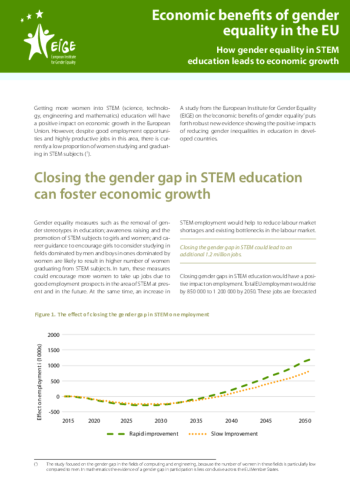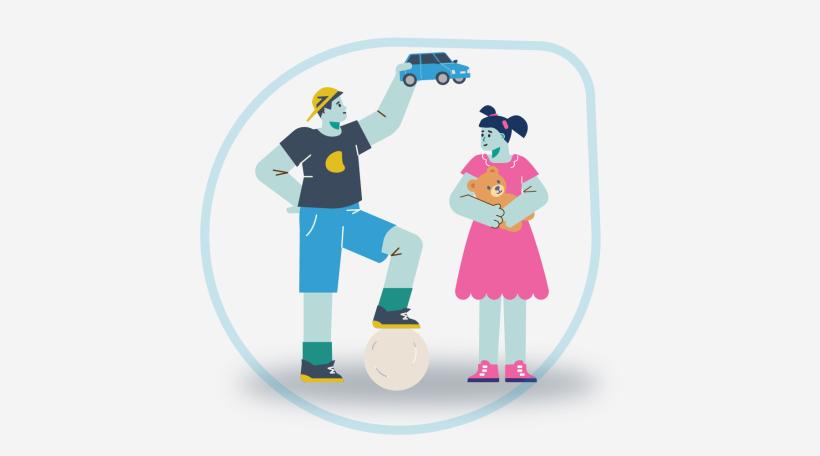
Getting more women into STEM (science, technology, engineering and mathematics) education will have a positive impact on economic growth in the European Union. However, despite good employment opportunities and highly productive jobs in this area, there is currently a low proportion of women studying and graduating in STEM subjects.
A study from the European Institute for Gender Equality (EIGE) on the ‘economic benefits of gender equality’ puts forth robust new evidence showing the positive impacts of reducing gender inequalities in education in developed countries.
Further information
Economic Benefits of Gender Equality: interactive platform presenting the results
Hard copy order URL
Downloads
- Provide feedback.
- Provide feedback.
- Provide feedback.
- Provide feedback.
- Provide feedback.
- Provide feedback.
- Provide feedback.
- Provide feedback.
- Provide feedback.
- Provide feedback.
- Provide feedback.
- Provide feedback.
- Provide feedback.
- Provide feedback.
- Provide feedback.
- Provide feedback.
- Provide feedback.
- Provide feedback.
- Provide feedback.
- Provide feedback.
- Provide feedback.
- Provide feedback.
- Provide feedback.
- Provide feedback.



